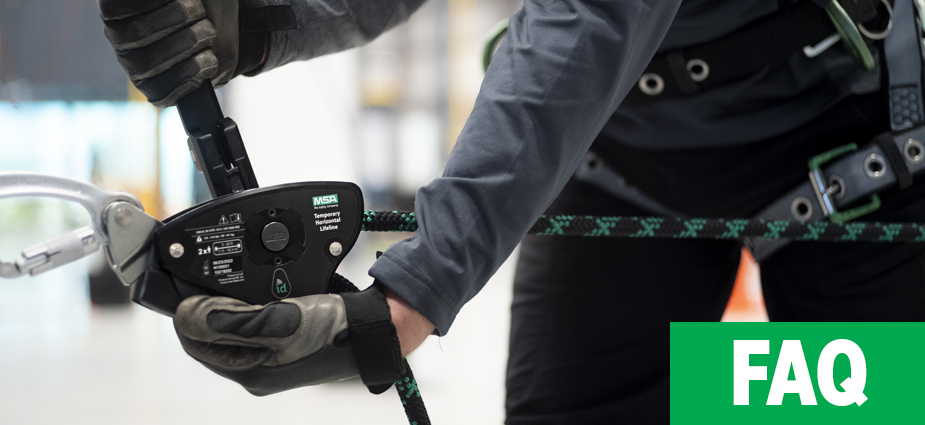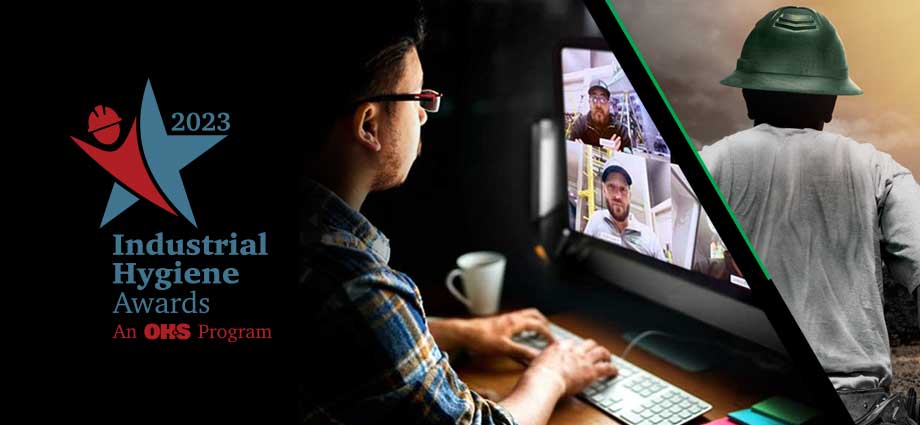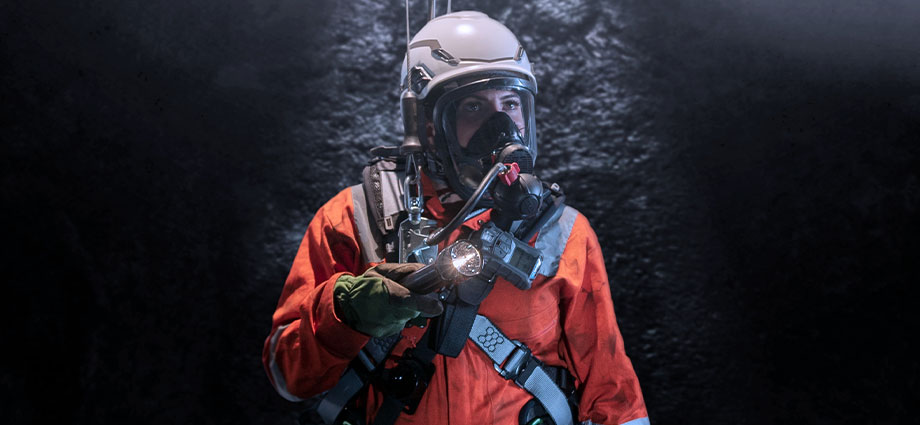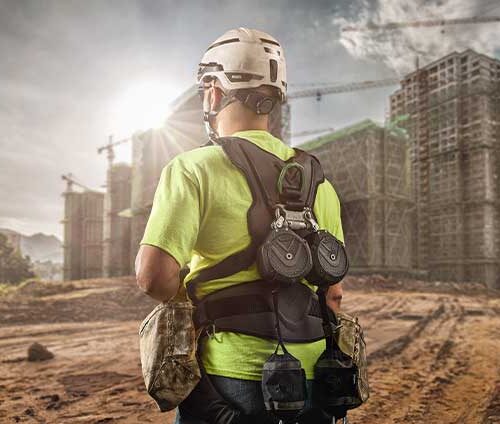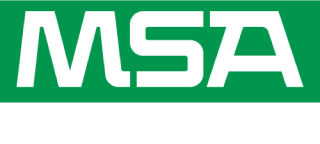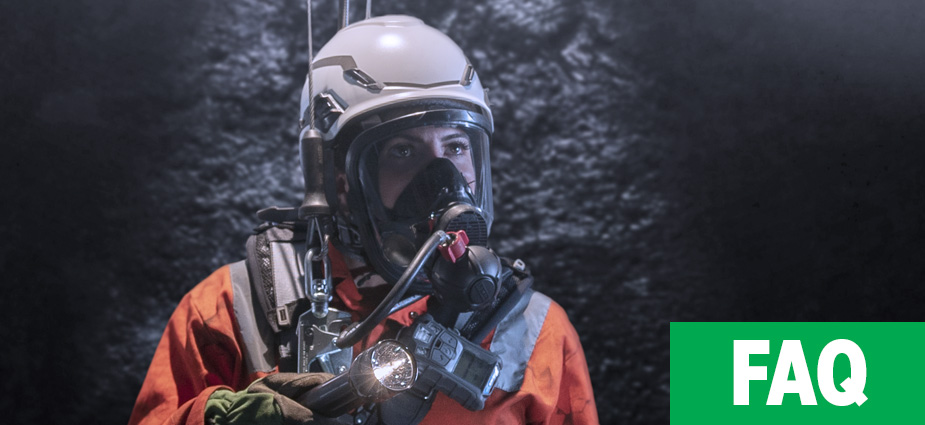
Confined spaces present unique challenges and risks that safety professionals can help reduce with proper understanding and precautions. According to the U.S. Bureau of Labor Statistics, from 2011 to 2018 there were 1,030 workers who died from occupational injuries involving a confined space.1
Here are some of the most frequently asked questions to use as a guide about confined space safety.
What is a confined space?
OSHA defines a confined space as an area that:
- Is large enough and configured so that an employee can enter and perform assigned work; and
- has limited or restricted means for entry or exit; and,
- Is not designed for continuous employee occupancy2
What is a permit-required confined space?
OSHA defines a permit-required confined space as a confined space that has one or more of the following:
- Contains or has potential to contain a hazardous atmosphere;
- Contains a material that has the potential for engulfing an entrant;
- Has an internal configuration such that an entrant could be trapped or asphyxiated by inwardly converging walls or by a floor which slopes downward and tapers to a smaller cross-section; or
- Contains any other recognized serious safety or health hazard2
According to OSHA, only workers who have been assigned and trained to work in a permit-required confined space may do so. Prior to workers entering a permit-required confined space, the employer has to write a permit that specifies what safety measures must be taken and who is allowed to go in.3
What are some of the common hazards that may be present in a confined space?
Common hazards found in confined spaces can include:
- Poor air quality due to insufficient oxygen, toxic gases, or asphyxiants (gases which can displace oxygen)
- Chemical exposures either through skin contact or inhalation
- Explosive or flammable atmospheres due to flammable liquids, gases, and combustible dusts
- Process-related hazards including residual chemicals or the release of the contents of a supply line
- Physical hazards that may involve noise, heat, cold, radiation, or inadequate lighting. Additional safety hazards might include moving parts of equipment, structural hazards, or engulfment
- Vehicular and pedestrian traffic
- Engulfment
- Visibility
- Biological hazards, such as where there is the presence of viruses, bacteria, or fungi4
Additional safety hazards might include moving parts of equipment, structural hazards, or engulfment.
What are some examples of confined spaces?
Confined spaces don’t have to be necessarily small and can be found below or above ground, across many industrial worksites. Some examples include silos, vats, hoppers, utility vaults, water supply towers, pipes, vessels, storage bins, manholes, and manure pits.4
What is the difference between OSHA’s general industry rule and its construction rule for confined space?
According to OSHA, the construction confined space rule applies when you are building a new structure or upgrading an old one. There are 5 main differences between the general industry rule and the construction confined space rule. These differences include:
- More detailed requirements to coordinate activities when there are multiple employers at the worksite. OSHA has said that this coordination is designed to ensure that these activities are coordinated to help prevent the introduction of hazards into a confined space.
- Evaluation of the worksite by a competent person to identify confined spaces, including permit-required confined spaces.
- Continuous atmospheric monitoring when possible
- Continuous monitoring of engulfment hazards
- In a case where there are changes to the entry conditions listed on the permit or an unexpected event requiring evacuation, this provision allows for the suspension of the permit instead of a cancellation. Before re-entry, the space must be returned to the entry conditions listed on the permit.3
What PPE and equipment is typically needed for confined space entry?
When entering a confined space, workers should be wearing the right PPE and be prepared with the necessary equipment to help reduce the risk of hazards for the application. This can include:
Respiratory Protection
SCBA provide the highest level of respiratory protection for confined space applications. MSA’s G1 Industrial SCBA features a Remote Cylinder Connection, which allows for cylinder compatibility across multiple platforms of MSA SCBA, including G1 NFPA SCBA and AirHawk® II SCBA.
Fall Protection
Fall Protection PPE and equipment may be necessary to facilitate both entry into and exit from confined space. Retrieval systems for workers and equipment includes:
- Full body harness, such as MSA V-SERIES® fall harnesses which feature enhanced comfort and flexibility.
- Connecting devices
- Tripod or davit systems. Confined space entry systems such as the MSA XTIRPA™ system provide vertical or horizontal entry into many common confined space applications.
Head, Eye, Face, and Hearing Protection
- Hard hats and safety helmets, such as the V-Gard® H1 helmet with a low -profile design
- Hearing protection (earplugs, earmuffs)
- Safety goggles
- Face shields
What steps should be taken to be prepared for emergency rescue situations?
Unfortunately, it’s not always possible to rely on 9-1-1 for a confined space rescue, as local authorities may not necessarily have the manpower or capability to perform a rescue. It is important for safety professionals to have an understanding of the capabilities of local authorities and take the proper steps to have the right personnel in place to respond to an emergency. Having a fully equipped and trained confined space rescue team (CSRT) comprised of qualified members from the employer’s team, local emergency responders, or external contractors can help ensure a quick response in an emergency.5
Learn more about confined spaces and find the right safety solutions for confined space entry here.
Sources
- https://www.bls.gov/iif/factsheets/fatal-occupational-injuries-confined-spaces-2011-19.htm
- https://www.osha.gov/laws-regs/regulations/standardnumber/1910/1910.146
- https://www.osha.gov/confined-spaces-construction/faq
- https://www.ccohs.ca/oshanswers/hsprograms/confinedspace/confinedspace_intro.html#section-1-hdr
- https://www.assp.org/news-and-articles/the-seven-steps-of-confined-space-rescue


